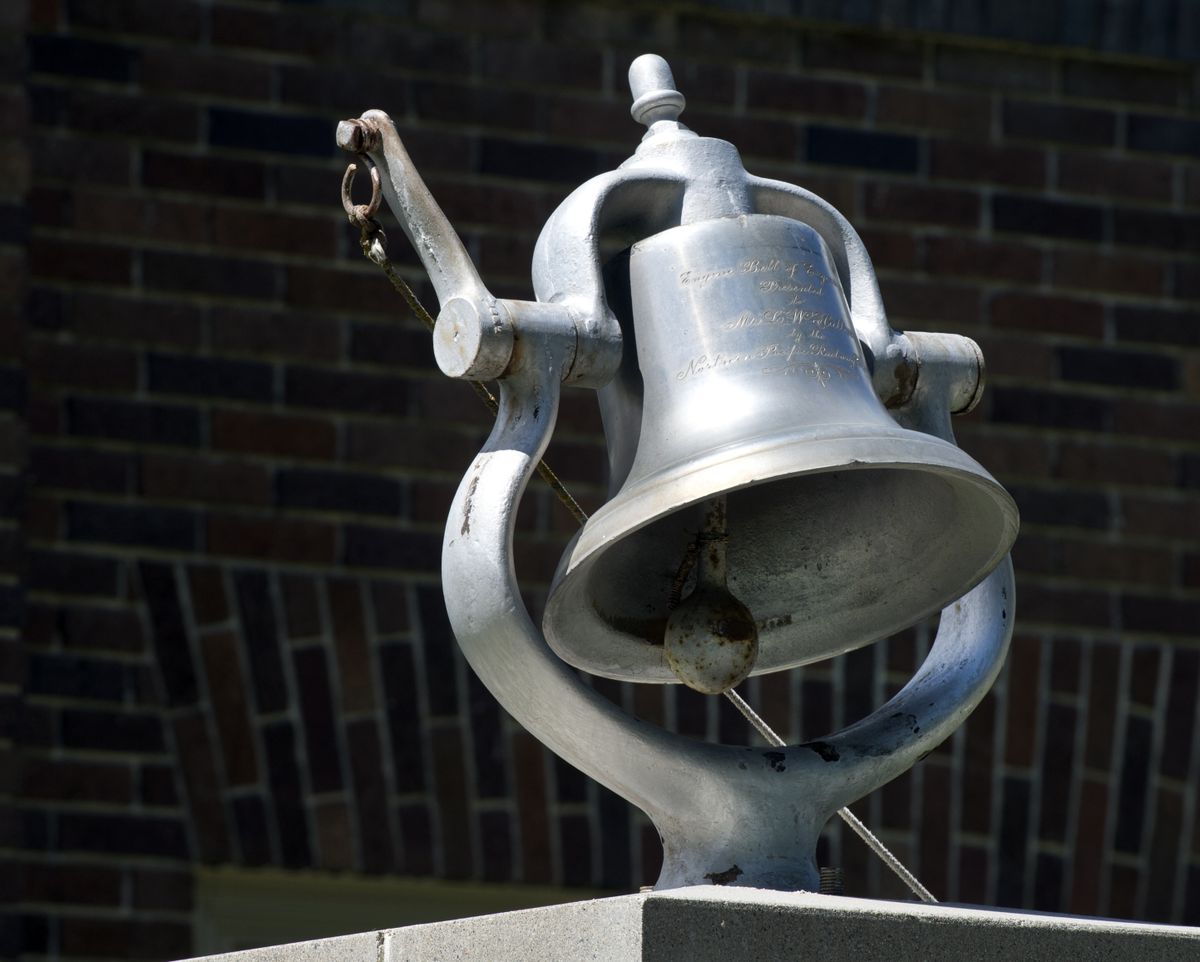Landmarks: Bell still ringing over Hutton Settlement
Founder tracked down ringer from his days on Engine 109

The bell atop a pillar just outside the administration building at the Hutton Settlement isn’t just a decoration, and it isn’t any old bell.
The bell comes from Northern Pacific Railway Company’s Engine 109 and was brought to the Hutton Settlement at the request of founder Levi W. Hutton.
This is the story: Hutton and his wife May were both orphaned young and endured unhappy childhoods. They had no children themselves. Upon her death in 1915, Hutton decided to use his considerable wealth to establish a caring home for children who had been orphaned, abused or abandoned. His Hutton Settlement opened in 1917 on 300 acres at its present location, 9907 E. Wellesley Ave.
Hutton was born in Iowa in 1860 and orphaned at age 6. He traveled out West at age 19 and learned to drive a steam locomotive in Missoula. He worked as an engineer for Northern Pacific, running ore through the rapidly developing Coeur d’Alene mining district in Idaho.
In Kellogg, he met the colorful May Arkwright, born in Ohio and abandoned at a young age by her parents. Active in the national suffrage movement and an advocate for the unemployed and disadvantaged, she had traveled with a group of men and women from the Ohio coal mines to take advantage of booming mining opportunities out West. She opened a boarding house and dining room near Kellogg (then called Wardner Junction). In 1887, Hutton became a boarder there and they were soon married.
The couple moved to Wallace and used any free time they had to work mining properties. In 1897 they invested with five others (including August Paulsen) in the Hercules Mine and struck it rich there in 1901. By 1907 the Huttons settled in Spokane, where he became a noted businessman and philanthropist and she focused on advancing her social and political passions.
There are many accounts of their fascinating lives and their legacy, including “The Hutton Settlement: A Home for One Man’s Family” by Doris H. Pieroth. In this book, it is noted that when the Hutton Settlement was opening its doors, Hutton contacted Northern Pacific in the hopes of locating the bell on the locomotive he had operated in Idaho when he first met May. The locomotive had been sold years earlier, but as many of the old locomotives were purchased to work in lumber camps, that’s where the search focused. Engine 109 turned up in a southwestern Washington lumber camp and the bell was retrieved.
In 1921 officials from Northern Pacific came from as far away as St. Paul to present the bell to Hutton.
Mike Butler, executive director of the Hutton Settlement, which is listed on the National Register of Historic Places, said it isn’t known just why Hutton had such a fondness for the locomotive or for the bell, though it is clear that he did. There is an account of how when he was still working on Engine 109, he had a plumber in Wallace fix his engine whistle with a chime so that its “distinctive toot could be identified throughout the canyons.”
When he received the bell many years later, Hutton had it mounted on the pedestal where it now stands, about 7 feet above the ground. A long cord was attached to the bell that led to one of the windows in the administration building so it could be rung without having to go outside. Butler said it’s not known why the bell was rung in the early days.
But it is still being rung today, though no longer remotely, on the Fourth of July, New Year’s Eve and other holidays. Often a child residing at the Hutton Settlement, which now serves as a home for dependent children who have needs that can’t be met by their biological families, will be given the honor of ringing the bell on his or her birthday.
Levi Hutton, a man whose own growing up years were so miserable and joyless, might certainly be pleased that his cherished locomotive bell continues to ring after 93 years.